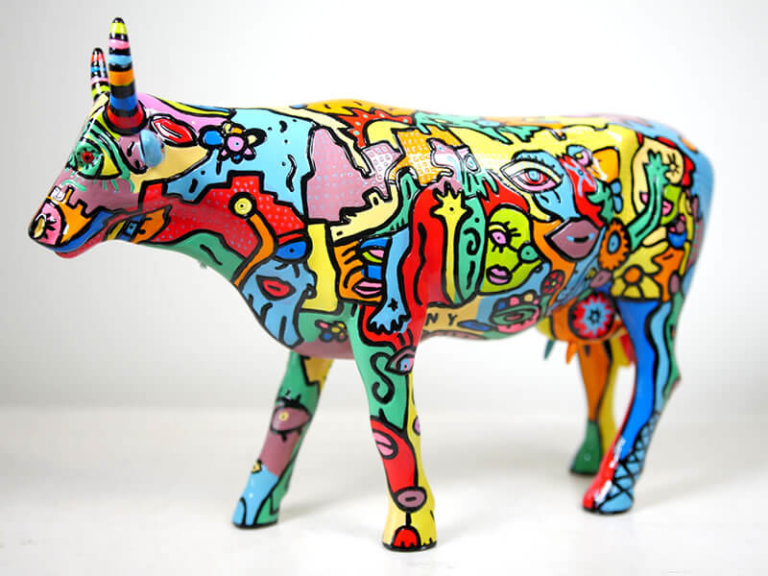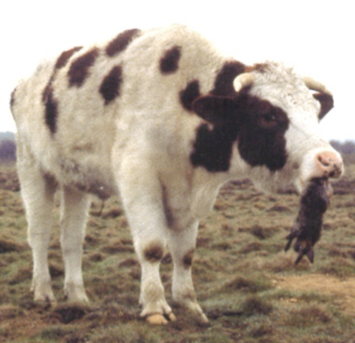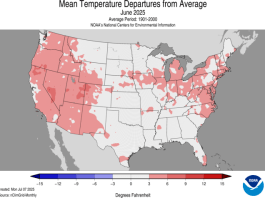 Recently, John Marble has been adjusting what he raises on his ranch to meet what his local customers are asking for. Here’s what they want, and how that might be impacting you. Of course, things may be different in your region. But this may help you explain what’s happening at your livestock auction, or give you ideas for what you should pay attention to.
Recently, John Marble has been adjusting what he raises on his ranch to meet what his local customers are asking for. Here’s what they want, and how that might be impacting you. Of course, things may be different in your region. But this may help you explain what’s happening at your livestock auction, or give you ideas for what you should pay attention to.
––––––––––––––––
As I look through the windshield at ranches and farms across this country, I am always struck by one thing: freedom! We get to do whatever we want, and some folks choose to do the darndest things. Isn’t America just wonderful?
 My own little ranching operation is no exception. I run a seasonal, transient grazing operation that looks like a stocker deal but uses almost exclusively half worn-out cast-off cows from other ranches. Pretty weird. And I wind up with a handful of different products that go to several different marketing channels. Of these, the most conventional items I produce are calves for the mainstream commercial or “commodity” market. Many of these calves are sold to my stocker-operator friend, Paul.
My own little ranching operation is no exception. I run a seasonal, transient grazing operation that looks like a stocker deal but uses almost exclusively half worn-out cast-off cows from other ranches. Pretty weird. And I wind up with a handful of different products that go to several different marketing channels. Of these, the most conventional items I produce are calves for the mainstream commercial or “commodity” market. Many of these calves are sold to my stocker-operator friend, Paul.
A few years ago Paul called to apologize a bit, explaining that he was getting “pressure from above” to reduce the variation in his calves. It seemed that the packers were complaining to the feeders and the feeders were complaining to Paul: “We want more uniform calves.” This year, Paul called with a somewhat more defined message:
 “Here’s the thing, John. They’ve tightened down on me some more. From now on, no spots or stripes, no roans, no horns, no rat-tails, no snake-bellies, no dairy blood, no brindles, no shorts, and for goodness sake, no miniatures. Oh, and no more than a tiny tic of ear. Bulls are still OK, but they better be pretty young. European genes are fine, but try to hold it down to half-bloods. Oh, and no, uh, ‘goofy-looking’ calves either.”
“Here’s the thing, John. They’ve tightened down on me some more. From now on, no spots or stripes, no roans, no horns, no rat-tails, no snake-bellies, no dairy blood, no brindles, no shorts, and for goodness sake, no miniatures. Oh, and no more than a tiny tic of ear. Bulls are still OK, but they better be pretty young. European genes are fine, but try to hold it down to half-bloods. Oh, and no, uh, ‘goofy-looking’ calves either.”
“Gee, Paul, sounds like the only thing you want are solid-colored, mostly British-type calves.”
“Exactly.”
One result of this conversation has been a slight change in our procedure on sale day. When I unload calves at Paul’s place, the first thing that happens is a quick inspection, where Paul sifts out any unacceptable genetics before weighing the calves in. We jump those rejects right back on the trailer and I take them back home, and then on to some other sort of marketing scheme. In reality, I know almost exactly which calves Paul will kick out and which he’ll take. This is because I know what market I am producing calves for and I know what market Paul is supplying calves to. Paul’s clear, straight-forward rules guide me in deciding what kind of cows I should be buying: cows with the kind of genetics that will produce commercially acceptable calves.
I can see how some folks might object to this whole scenario, the idea that a cattle buyer would pick and choose and tell me what kind of cows I should be buying or what kind of calves he will accept. And I’m sure some people’s feelings might be hurt. After all, some folks have been raising spotted or striped cattle for generations and have gotten along just fine. Here’s the bad news for a lot of ranchers: the penalty for raising calves that do not fit the commercial buyer’s orders is growing more severe, as in, non-mainstream calves are routinely discounted by 25 or 33 percent at the auction yard. Sometimes it’s more, much more. And if you are working with a private buyer like my friend Paul, it has become a zero-sum game: non-mainstream calves are simply not accepted at any price.
What kind of calves are you producing?
Maybe a better question is, what market are you trying to serve? If it’s the commodity market, I’d suggest you should be using genetics that eliminate all of the characteristics Paul mentioned above, because even if you don’t have a friend like Paul giving you your marching orders, the bigger market is telling us all the same thing. The market wants uniform calves that will efficiently grade USDA Choice, and do it between 1,100 to 1,500 pounds. If you stray much from that, the market will crush you
Why are they so picky all of the sudden?
 Actually, I don’t think this is all that sudden. Over the past few decades, the packers and feeders have become more sophisticated. They’ve figured out which calves make money and which calves don’t, and they began to express that knowledge by telling their order buyers how much “discount” to apply to those less profitable calves. More recently, they simply refuse to buy any non-conforming genetics, at least in my part of the country. Blame computers or those snippy young MBAs if it makes you feel better.
Actually, I don’t think this is all that sudden. Over the past few decades, the packers and feeders have become more sophisticated. They’ve figured out which calves make money and which calves don’t, and they began to express that knowledge by telling their order buyers how much “discount” to apply to those less profitable calves. More recently, they simply refuse to buy any non-conforming genetics, at least in my part of the country. Blame computers or those snippy young MBAs if it makes you feel better.
Selling Outside of the Mainstream
Not all calves sell through the auction or go to the feedlot, of course. If you are producing meat for Community Supported Agriculture (CSA) or Farmers Market, a roadside stand, or some other business where you sell meat to individual buyers, well, congratulations. You are what has come to be called a Price Maker instead of a Price Taker. This also means you can raise whatever breed or type of cattle you want to, without having to absorb a discount. In fact, there are some meat producers that appear to benefit from raising out-of-the-ordinary cattle. I had some friends in the direct sales business who liked to park their Belted Galloway cattle out by the highway because people just loved to look at them, and that was good for business.
But now let’s go back to the reality of selling cattle in this country. A first step might be to ask,“How big is the direct farm sale market when it comes to meat?” Well, it’s a complicated question, but after reading a half-dozen articles (including work done by Universities and USDA) I would conclude that direct meat sales represent less than one-half of one percent of total meat sales in the US. Put another way, this means that at least 99.5% of meat sales in this country are not direct sales. That 99.5 % comes from some sort of commodity producer.
My conclusion, then, is that unless you are actually selling meat to individual customers, your calves will very likely wind up in the conventional marketplace. And if the genetics you choose don’t fit what the packers, the feedlots, and the stocker buyers want, well, be prepared for a painful payday.
Other Kinds of Production: Direct Marketing or Hobby Ranching
If you are a direct marketer, or if you are running a ranch for reasons beyond business, you get to choose what to do, and I mean ANYTHING! And that’s perfectly alright. But let’s be clear about something: most novelty cattle will not work in the mainstream “commodity” market, because genetically speaking, they don’t fill the bill. If you can sell your calves to other folks who want to do what you’re doing, great. But if you send them to the auction yard they will be severely discounted.
Local Climate Concerns
In certain parts of the country there may be environmental conditions that play into your decisions about breed. Still, recognize that these are complicated decisions: choosing a breed to fit certain environmental conditions (heat, cold, etc.) may mean receiving a lower market price in some regions of the country. Maybe that’s still OK. You get to decide. Frankly, everyone should try to do the math.

Summing it all Up
As the beef industry becomes more sophisticated, genetics (especially phenotype) are playing an ever-larger role, affecting our ability to market cattle. The penalty for producing cattle that will not fit the commercial market criteria is growing more and more severe. Thoughtful producers will take note.
In the meantime, happy grazing, and happy marketing!
For another perspective on how to successfully market the animals you raise, check out this week’s article by Greg Judy, “How Do You Pay Bills With $50 Profit Per Calf?”




